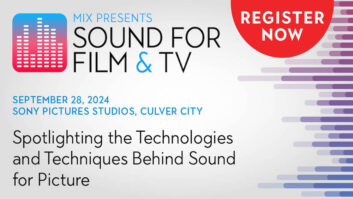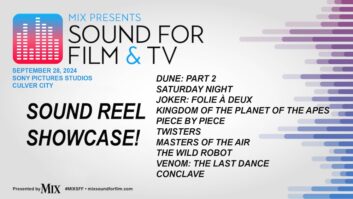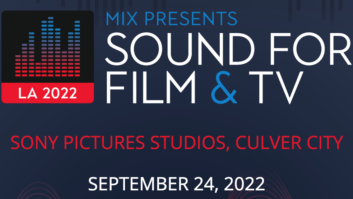
In terms of upheavals, the biggest revolution in 20th-century audio was surely the talking motion picture. In a matter of years, careers were spawned and ruined, and entire industries created and dismantled—all based on the rise of the “talkies.” Vitaphone (a 1925 co-venture between Warner Bros. and Western Electric) wasn’t the first—or even the last—film sound format to arise out of this new craze, but once the public had a taste of synchronous theater audio, there was no turning back.
Working in the Vitagraph Studio in Brooklyn, N.Y., Western engineers worked with a team from Bell Labs to create Vitaphone, a format using 16-inch discs running at 331/3 rpm on a projector-driven turntable, for a running time of about 10 minutes, which matched a single 1,000-foot reel of 35mm film. The format was less than ideal: A skip in the record or a film splice meant loss of sync; the system bandwidth was only about 4 kHz; and Vitaphone required an extreme needle force of 85 to 170 grams(!), meaning the life of the shellac disc was limited to a couple dozen plays, at best.
There were earlier film sound systems, ranging from General Electric’s Pallophotophone to Lee De Forest’s Phonofilm and a variety of earlier systems created at Western Electric. These were doomed mostly by studio/theater owners’ reluctance to make the substantial investment in playback equipment. But it was the Vitaphone touch on the 1927 The Jazz Singer that created a worldwide demand for film sound. Even with talking parts in a only few sections (mostly song numbers), the success of this Al Jolson mega-hit marked the beginning of the end for the silent screen.
The Vitaphone film+disc system that created the revolution was short-lived, replaced by the sound-on-film systems such as the GE/RCA variable-area soundtracks (the forerunner of today’s optical tracks) and Fox’s variable density system. But one key to the success of the Vitaphone was the availability of Western Electric sound systems, which not only helped popularize theater sound, but catalyzed the development of modern sound reinforcement systems. Ironically, the film+disc concept was revived 65 years later with the DTS (Digital Theater Systems) release of Jurassic Park in 1992, in which 6-channel audio on CD-ROM was locked to timecode on the film. [Note: The Vitaphone Project was formed to assist in the restoration of Vitaphone-format films—many of which exist today with picture intact but without sound disks. Contact www.vitaphoneproject.com for more info.—Ed.]







